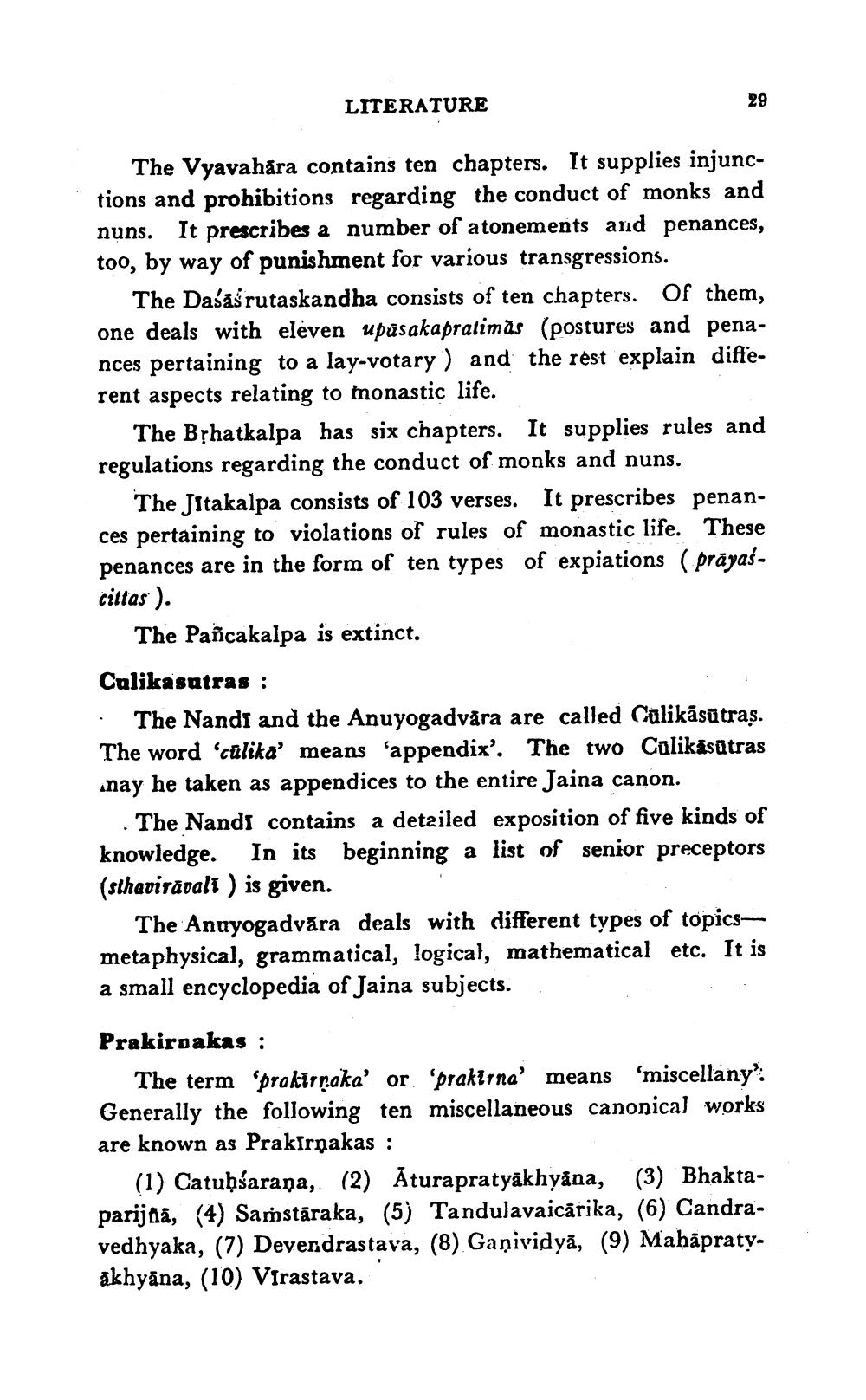________________
LITERATURE
29
The Vyavahara contains ten chapters. It supplies injunctions and prohibitions regarding the conduct of monks and nuns. It prescribes a number of atonements and penances, too, by way of punishment for various transgressions.
The Daśas rutaskandha consists of ten chapters. Of them, one deals with eleven upasakapratimas (postures and penances pertaining to a lay-votary) and the rest explain different aspects relating to monastic life.
The Bṛhatkalpa has six chapters. It supplies rules and regulations regarding the conduct of monks and nuns.
The Jitakalpa consists of 103 verses. It prescribes penances pertaining to violations of rules of monastic life. These penances are in the form of ten types of expiations (prāyascittas).
The Pañcakalpa is extinct.
Culikasutras :
The Nandi and the Anuyogadvara are called Culikāsūtras. The word 'culika' means 'appendix'. The two Calikasutras he taken as appendices to the entire Jaina canon.
nay
The Nandi contains a detailed exposition of five kinds of knowledge. In its beginning a list of senior preceptors (sthaviravali) is given.
The Anuyogadvara deals with different types of topicsmetaphysical, grammatical, logical, mathematical etc. It is a small encyclopedia of Jaina subjects.
Prakiraakas :
The term 'prakirṛaka' or 'prakirna' means 'miscellany". Generally the following ten miscellaneous canonical works are known as Prakirņakas:
(1) Catubśarana, (2) Āturapratyākhyāna, (3) Bhaktaparijñā, (4) Saṁstāraka, (5) Tandulavaicārika, (6) Candravedhyaka, (7) Devendrastava, (8) Gaṇividya, (9) Mahapratyakhyāna, (10) Virastava.




